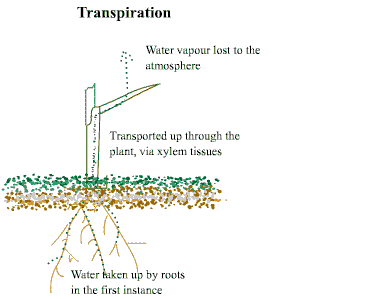Introduction
This article will outline the general process of transpiration and will concentrate on the cool season grasses which predominate in the British Isles.
What is it?
Water lost through the plant, primarily through the stomata in leaves, in the form of water vapour to the atmosphere.
Heat input provided by sunlight is cooled by the movement of water, from the roots, through the plant and evaporated out mostly through the leaves, making transpiration an important means of cooling a plant.
Water is the most abundant of resources that is used by plants and typically makes up 80% - 95% of the weight of a plant.
A plant that is well supplied with water is termed turgid, whilst a plant that is lacking in water content and is wilting is termed flaccid.

The Transpiration Stream
This describes the flow of water from the roots up through the plant (via the xylem tissues) to the leaves and out to the atmosphere.
Approximately 95% of the water flowing through the plant is lost through the stomata and 5% through the cuticle.
Environmental Effects on Transpiration
Transpiration is affected by the following:
- Leaf type - a small leaf area will transpire less than a large leaved plant; rolled leaves will transpire less than flat open leaves;
- Humidity - high humidity will reduce transpiration, whilst dry environments will increase it;
- Wind speed - high wind speeds increase transpiration rates;
- Sunlight - full and bright sunlight will increase transpiration;
- Depth of rooting - this will prolong the period of transpiration due to the increased water availability, increasing drought resistance;
- Longer grass length - increases transpiration due to the greater surface area of leaves when contrasted with shorter grass, however, longer grass length will produce a more efficient use of water within the soil than shorter grass as there is a greater depth and mass of root.
